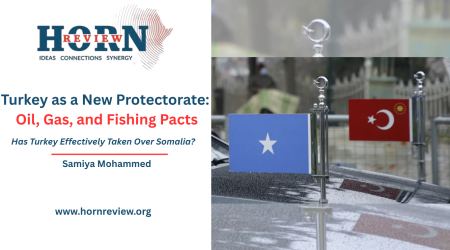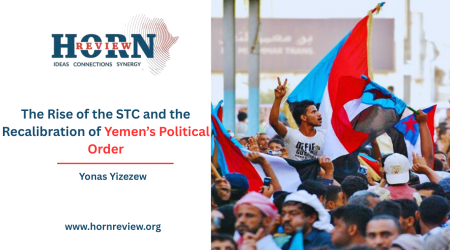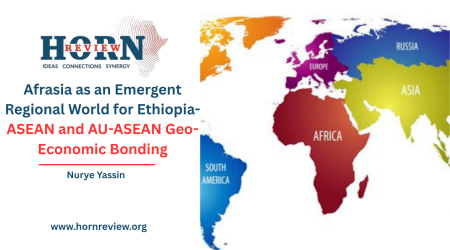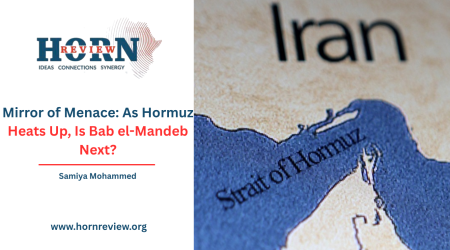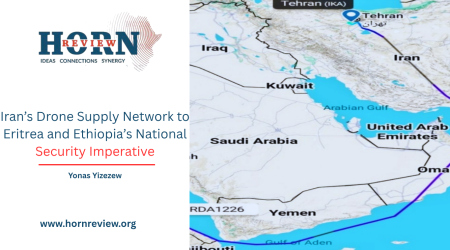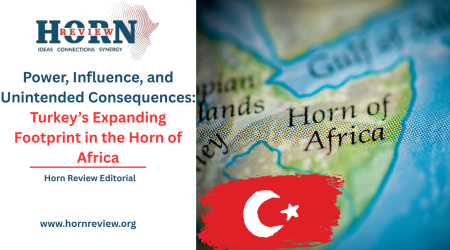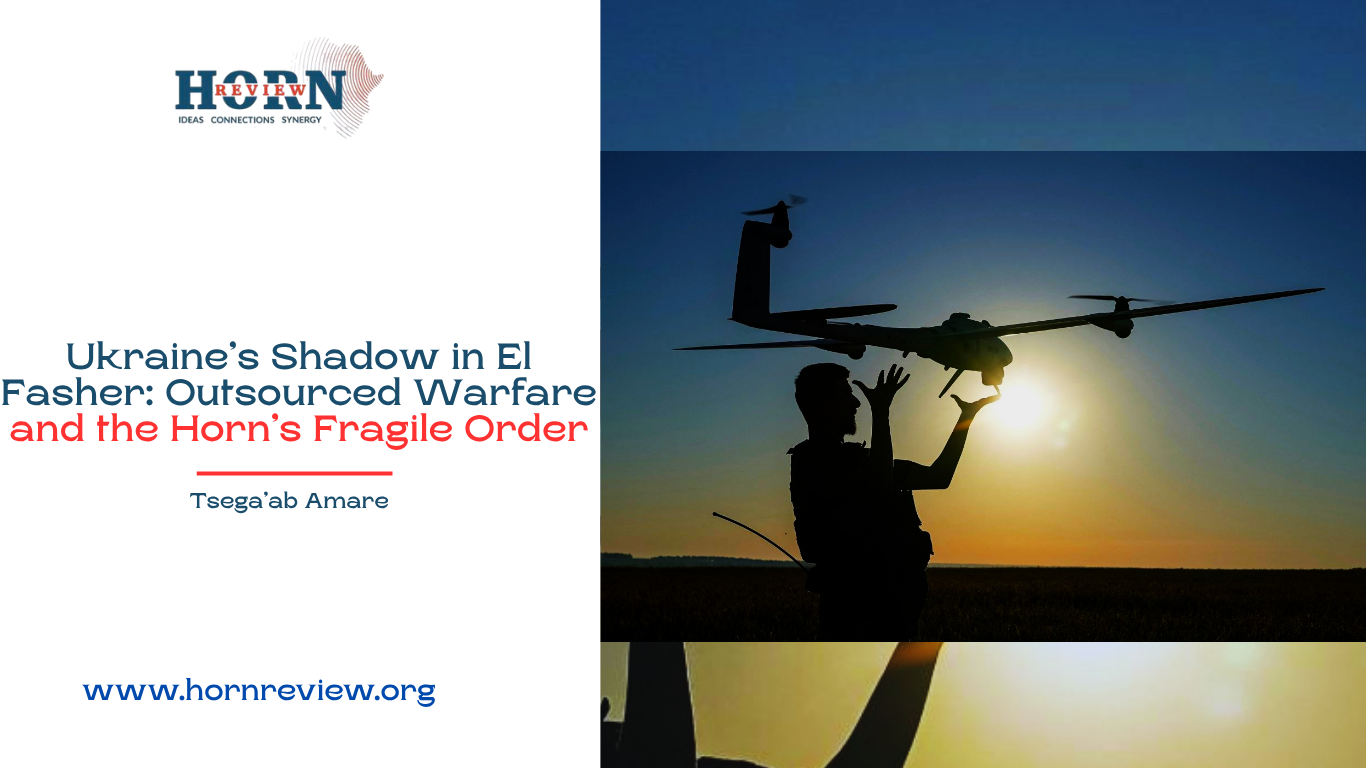
18
Oct
Ukraine’s Shadow in El Fasher: Outsourced Warfare and the Horn’s Fragile Order
In late September 2025, El Fasher became the latest front where global wars leave local scars. A siege enforced through artillery, drones, and engineered barriers produced soaring civilian casualties and sealed off humanitarian relief.
Satellite imagery reveals a grim pattern: rising burial activity, restricted movement, and deliberate encirclement. Remote sensing from Yale’s Humanitarian Research Lab confirms the construction of physical berms by RSF forces to seal exits, repeated munitions impact in residential areas, and burial patterns consistent with mass fatalities. El Fasher’s suffering is not incidental—it is structured.
These findings form a usable record for both immediate civilian protection and future accountability. The concentration of attacks on markets, mosques, and shelters indicates a deliberate intent to target civilians. What distinguishes El Fasher, however, is not only the brutality of RSF tactics but the emergence of a new kind of external imprint: battlefield expertise refined in Ukraine resurfacing in the Horn of Africa.
Since Russia’s 2022 invasion, Ukraine has become a center of military innovation, particularly in drone warfare, rapid targeting, and sensor-to-shooter coordination. Those skills are transferable. Two distinct but interconnected dynamics explain why references to Ukrainian nationals in Sudan are significant.
On one hand, Kyiv’s expanded diplomatic presence in Africa represents legitimate statecraft. Since 2022, Ukraine has sought deeper diplomatic and economic ties across the continent, including plans for a resident mission in Sudan, as part of a broader effort to diversify alliances and mobilize African support in international forums.
On the other hand, the circulation of trained personnel and battlefield techniques is a global trend. According to SAF statements, Colombian and Ukrainian nationals acting as ‘drone engineers’ and snipers were killed in clashes near El Fasher. These claims align with numerous investigations reporting the deployment of foreign fighters and mercenary networks in Sudan. Although these accounts remain unverified in scale or organization, they reflect a real operational pattern: individuals with combat experience from Ukraine and other theatres can quickly transfer drone-enabled reconnaissance and strike capabilities to urban conflicts in the Horn, increasing lethality and complicating both protection and mediation efforts.
These dynamic underscores the double-edged nature of Kyiv’s African pivot, its diplomatic expansion intersecting with the diffusion of battlefield know-how.
The Duality of Diplomacy and War Markets
Kyiv is a necessary partner in clarifying whether any alleged nationals acted as state-sanctioned contractors, private volunteers, or illicit mercenaries. But beyond attribution, the real challenge lies in disrupting the markets that buy and sell those skills. Punishing diplomacy achieves little; targeting the financial ecosystems that sustain mercenary exchanges achieves much more.
Combat-tested drone tactics, sensor-to-shooter linkages, and operator training that evolved in Ukraine are now globally portable. Individuals with this expertise—whether contracted, coerced, or freelanced—become operational force multipliers in fragile urban theatres like El Fasher. According to Sudanese military intelligence, these fighters used Ukrainian-made drones for reconnaissance and strikes against army units, demonstrating how foreign expertise can quickly enhance the operational capabilities of irregular forces. The presence of such specialists allows these groups to acquire precision-strike capacity within weeks, dramatically raising the speed and lethality of urban warfare.
The El Fasher siege, then, epitomizes outsourced warfare. The RSF’s war economy—fueled by gold rents and external finance—enables the purchase of skills, equipment, and time. Technical expertise combined with extractive rents creates a replicable model: buy capability, hide the transaction, and fund it with resource wealth.
This model thrives on deniability. Patrons can disavow involvement even as they benefit, allowing both impunity and endurance. States and militias alike gain technical sophistication without formal accountability. For Sudan’s civilians, the result is devastating: urban sieges that are deadlier, faster, and harder to stop.
Ukraine’s emergence as an African diplomatic actor adds another layer of complexity. Its outreach competes indirectly with Russian influence and Gulf-backed patronage networks. Yet its credibility depends on clear boundaries: any blurring between official diplomacy and private violence would undermine Kyiv’s legitimacy in the Global South. Managing that distinction, separating state-sanctioned diplomacy from freelance warfare, is critical for Ukraine’s long-term strategic credibility.
More broadly, the Ukraine war has accelerated a global marketplace for military skills. Drone operators, medics, and tacticians are circulating through opaque transnational networks. The Horn of Africa, rich in resources and marked by permissive borders, has become fertile ground for this diffusion.
If left unchecked, the El Fasher model risks entrenching four dangerous patterns:
- Protracted urban sieges as the new normal of conflict.
- Normalization of contractor warfare, undermining state accountability;
- Regional spillovers, as skills and equipment migrate across borders.
- Erosion of international accountability, as sanctions fail to reach financial enablers.
Sanctions and prosecutions lose deterrent power unless refocused on financial interdiction and forensic evidence.
The AU and IGAD should establish rapid-response consular channels with Kyiv and other implicated states to confirm or dismiss allegations regarding their nationals. Target gold monetization routes, front companies, and permissive banking systems that convert resource rents into contracts. Public–private cooperation with regional banks is critical. Deploy satellite and UAV surveillance to verify humanitarian corridors, supported by independent labs capable of producing forensic-grade evidence for courts and relief agencies.
Conclusion
El Fasher is more than another chapter in Sudan’s long war; it is a warning about the mutation of modern conflict. The siege shows how financial rents, foreign expertise, and unregulated technologies can merge into a new, borderless form of warfare—one where accountability dissolves and civilians pay the highest price. As the tools and talent of one war migrate into another, the distinction between diplomacy and militarized commerce becomes dangerously thin.
For Africa’s institutions, the priority is not only to respond to atrocities but to anticipate their mechanics—to trace the money, the contractors, and the corridors through which expertise moves. For Ukraine, preserving diplomatic credibility in the Global South will depend on drawing clear firewalls between legitimate engagement and the shadow markets of outsourced warfare.
The battle for El Fasher thus speaks to a broader struggle: whether the international system can still regulate the privatization of war. Without such regulation, global conflicts will no longer have frontlines except export markets.
By Tsega’ab Amare, Researcher, Horn Review

